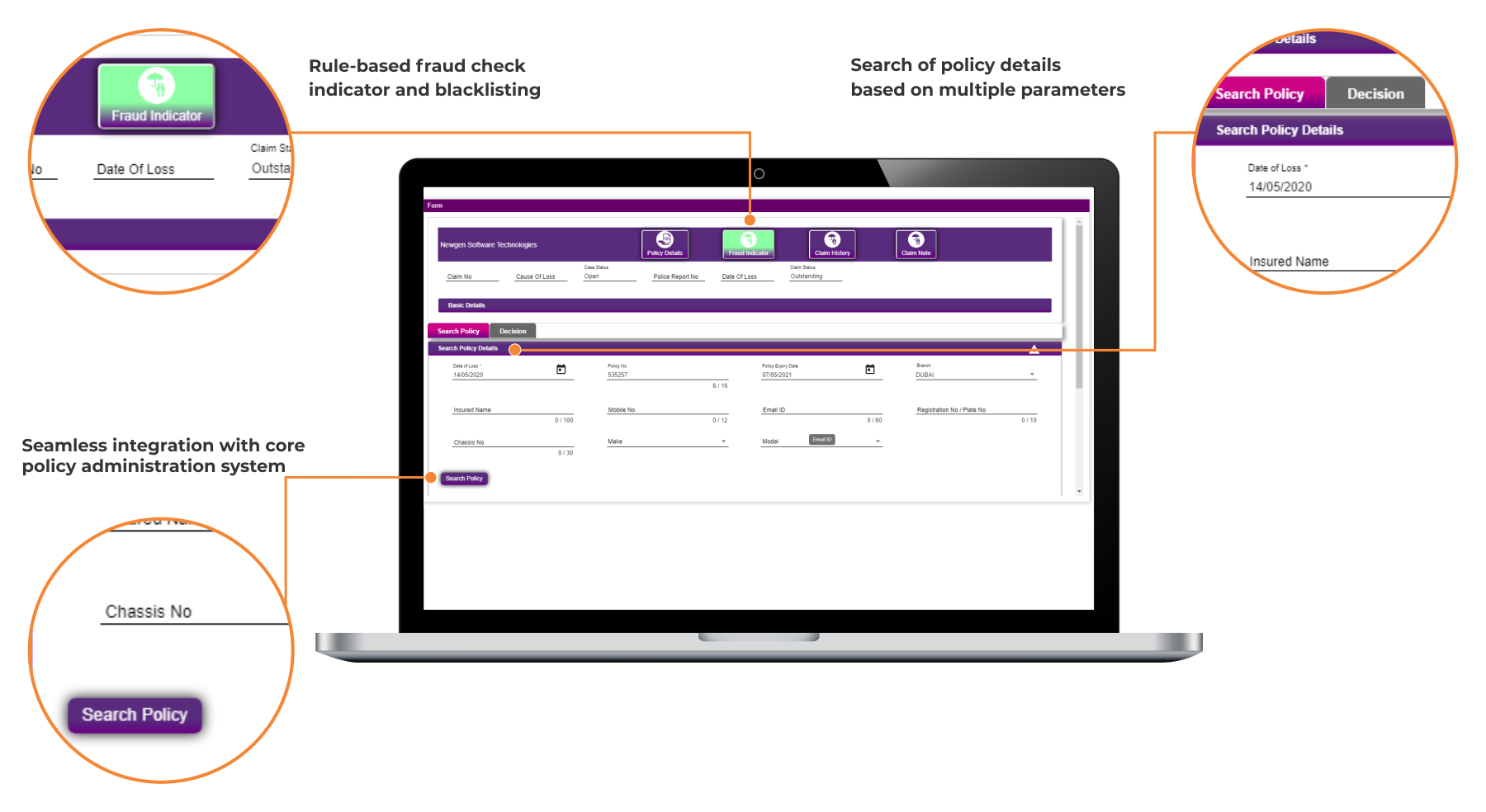Claims Management software automates the end-to-end claims journey, from intimation of the first notice of loss and fraud detection to claims adjudication, and finally claims settlement. Experience the flexibility of addressing various claim types differently, like death and maturity claims, while improving regulatory compliance and eliminating non-compliant penalties. Claims Management software enables faster, accurate, and effective processing through data capture, payment tracking, salvage and recovery tracking, legal matter processing, monitoring, and more.
Advanced claims management software ensures efficient claims processing operations, thus empowering insurers prioritize customer satisfaction, cost-effectiveness, and adaptability with streamlined processes, ensured compliances, enhanced customer experience, and boosted efficiency. With automated claims processing, companies can accelerate their digital journeys with smart and adaptable business rules that closely match their claims management processes for optimal efficiency and effectiveness.
Features of Newgen Insurance Claims Management Software

Customer Self Service Portal
Customer self-service portal, available via mobile and web-enabled application
Real-time registration of customer claims and status tracking of submitted claims
Policy Information Retrieval and Verification
Auto-retrieval of policy information upon entry of key indexing fields
Claims duplicity prevention and flagging of duplicate entries to avoid errors
Smart Case Routing and Allocation
Automated case routing based on adjudicator’s workload and experience with handling the case’s level of complexity
Effective registration, adjudication, tracking, and management of claim submissions
Seamless tracking and management of claims through a single interface
Rule-based Algorithms
Built-in, comprehensive business rules for automatically categorizing claims as “fast track” or “non-fast track”
Flexibility to add or modify stakeholders— garages, assessors, loss adjusters, surveyors, investigators, claim officers, etc.
Thorough Claim Assessment
Detailed assessment of each claim by providing an all-inclusive dashboard to the assessor
Request capabilities for additional details based on dynamic needs
Monitoring and Insights
Defined KPIs to monitor and measure the efficiency of the users
Escalation matrix and monitoring reports for transparent and timely claims processing
Brands using Newgen Platform



Success Stories
Join the Conversation
Solution Built On NewgenONE Platform for Insurance Firms
All You need to know about Insurance Claims Management
Claims management software is a type of computer program or platform designed to help organizations, particularly insurance companies, efficiently manage customers’ claims. The claims management software streamlines the end-to-end claims process, from initial submission to final settlement, by automating various tasks and providing tools for monitoring and tracking claims.
Claims automation refers to the process of using technology, such as artificial intelligence (AI), machine learning, and robotic process automation (RPA), to streamline and expedite the handling of insurance claims. The process involves automating various steps in the claims processing workflow, including submission of claims, validation, assessment, adjudication, and payment.
A claims processing system is a software application or a set of procedures used by insurance companies, healthcare providers, or other organizations to handle and manage insurance claims in an efficient manner. It involves the entire process, from the initial submission of a claim by a policyholder or a healthcare provider to the final resolution of the claim. This includes verifying the validity of the claim, assessing the coverage, determining the amount payable, and processing the payment to the claimant or provider.
Adjudication of a claim refers to the formal process of resolving a dispute or controversy regarding a claim made by one party against another. This process typically involves a neutral third-party—judge, arbitrator, or adjudicator—who reviews the evidence and arguments presented by both sides and renders a decision or judgment.
Content services play an important role in insurance claims management by facilitating efficient handling of documents, data, and communication throughout the claims process. Enlisted below are some of the key roles of content services in insurance claims management:
- Document management
- Workflow automation
- Data extraction and integration
- Collaboration and communication
- Compliance and security
- Analytics and reporting
- Customer experience
An efficient claims management process not only streamlines operations by minimizing claim denials and reducing billing errors but also expedites revenue cycles. Moreover, it serves as a safeguard against fraudulent activities, enhances patients’ satisfaction levels, ensures adherence with healthcare regulations, and mitigates legal risks.
Claims management is aimed at handling and resolving claims made by individuals or organizations against a company, insurer, government agency, or other entities. These claims can arise from various situations, including accidents, injuries, property damage, contractual disputes, or other forms of liability.
A claims management system (CMS) is a software application used by insurance companies, healthcare organizations, and other entities to streamline and automate the process of managing insurance claims. It helps in processing claims efficiently, tracking their status, and ensuring compliance with regulations and policies.
Claims management services are responsible for guidance and support, pertaining to seeking compensation, restitution, repayment, or any form of remedy for losses or damages, as well as assistance with fulfilling other obligations. These services extend to various aspects including litigation, participating in regulatory schemes, or engaging in voluntary arrangements.
Claims management is aimed at handling insurance claims, encompassing various steps to ensure that claims are processed efficiently and accurately. Here are the typical steps involved in claims management:
- Notification
- Claim documentation
- Claim review
- Coverage determination
- Claim settlement
- Payment processing
- Claim closure
- Review and analysis
- Subrogation (if applicable)
- Customer feedback
A customer reports a suspicious transaction to the bank. Customer service collects details and registers a claim. The bank investigates, either refunding if fraud is confirmed or explaining if the transaction is legitimate. The customer is kept informed across each step of the process. Feedback is collected for improvement.













